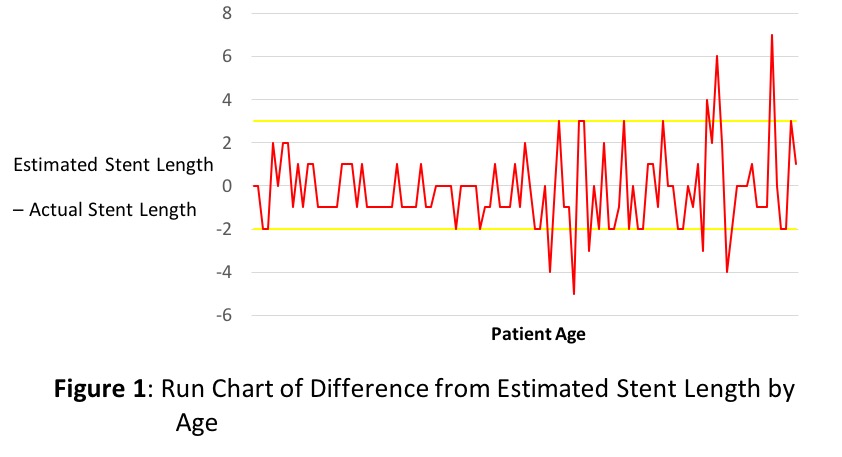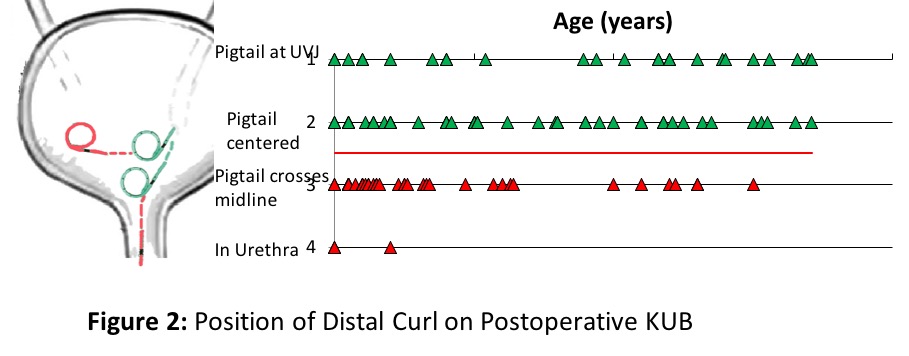Does the Stent Length Formula “Age +10” Apply to All Pediatric Patients?
Rodolfo A. Elizondo, MD, Kathleen Puttmann, MD, Jeff White, MD, Lily Wang, MD, Kunj Sheth, MD, Minki Baek, MD, Chester Koh, MD.
Texas Children's Hospital / Baylor College of Medicine, Houston, TX, USA.
BACKGROUND: Ureteral stents are commonly used after several pediatric urologic procedures. While the previously reported formula "stent length (cm) = patient age in years+10" (J Urol, 2007) often provides a close estimate of necessary ureteral stent length size, to our knowledge, this estimating tool has not been previously validated. We hypothesized that the ureteral stent length formula in pediatric patients will have increased variability for older age groups.METHODS: Prospective collection of perioperative imaging characteristics and stent lengths were reviewed for pediatric patients undergoing robotic assisted laparoscopic pyeloplasty from 2013 - 2017. Cystoscopy with retrograde pyelography and a postoperative KUB for confirmation of ureteral stent placement were performed for all cases. The actual stent length used was compared to the calculated stent length by age. Chi-square, Fisher exact test and multivariate logistic regression were used for analysisRESULTS:There were 114 patients with an average age of 6 years old (range: 2 months to 17 years old) who underwent preoperative and postoperative imaging. The patients were 78% male (88/113) with an average BMI of 17.9 kg/m2. Comparing the calculated stent length to actual length, 2.7% (3/114) of the stents placed were noted to be greater than 2 cm shorter than the calculated length, and 11.7% (13/114) were noted to be greater than 3 cm longer than the calculated length (Figure 1). The stent length difference range was from 4 cm shorter than calculated to 7 cm longer than calculated. More discrepancies between the calculated and actual stent length were seen in older patients (Figure 2).Looking at stent fit by age, in patients 3 years old and younger, the stent was too long in 61% (34/56) where 3 stents had entered the urethra (Table 1). For patients age 4 - 7 years old, 24% stents (5/21) were too long, and for patients > 8 years old, 16% (7/43) of the stents were too long.CONCLUSIONS: While the formula "stent length (cm) = patient age in years+10" appears to be valid for many pediatric patients, a higher rate of discrepancies (outliers) were noted between the calculated stent lengths and actual stent lengths in the older pediatric patient group (> 8 years old). In addition, current formulas overestimate needed stent length in younger children, where we recommend using (Patient Age + 10) minus two to estimate stent length for infants to 3 years old. 


Back to 2018 Program




